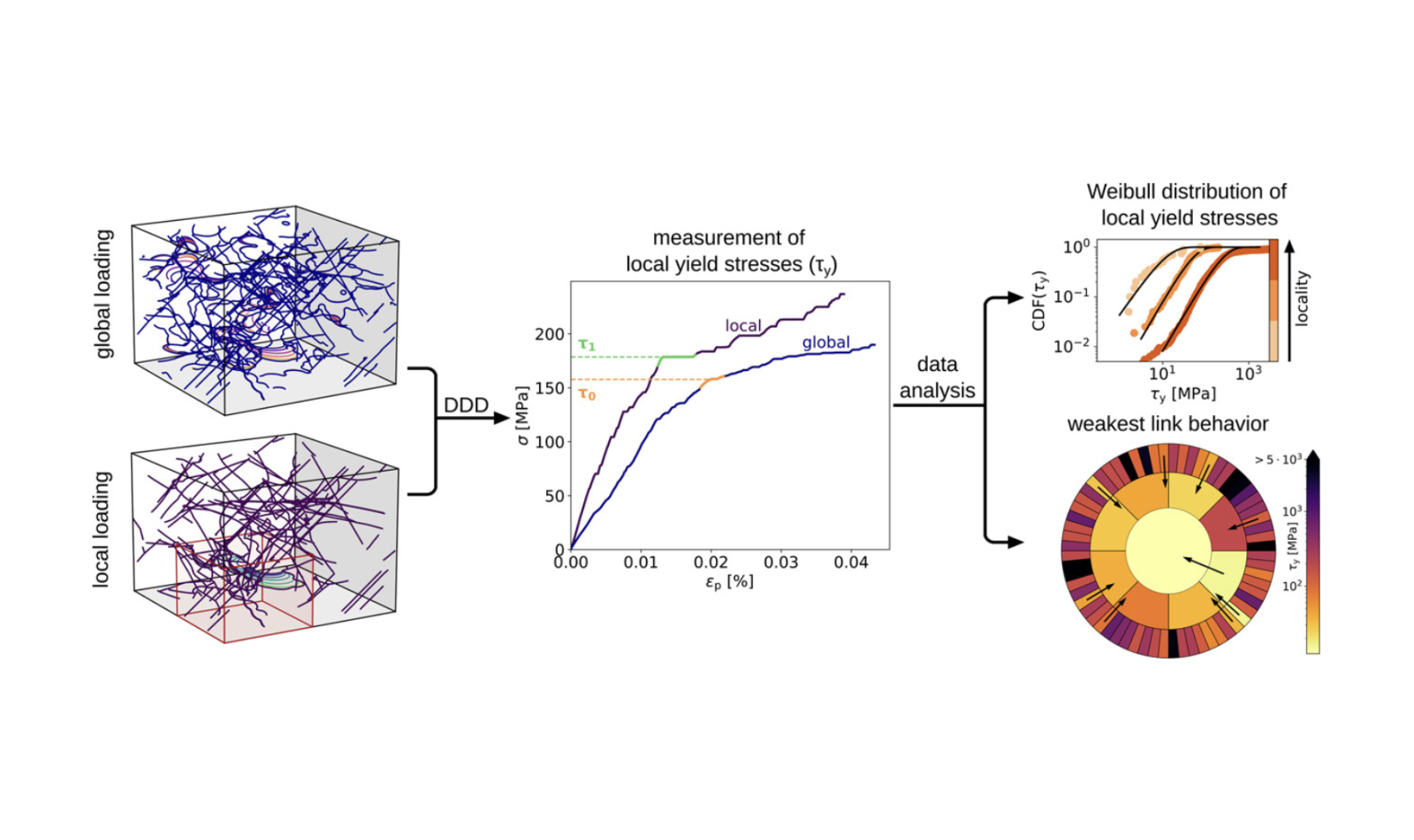Abstract: Materials are often heterogeneous at various length scales, with variations in grain structure, defects, and composition which has a strong influence on the emergent macroscopic plastic behavior. In particular, heterogeneities lead to fluctuations in the plastic response in the form of jerky flow and ubiquitous strain bursts. One of the crucial aspects of plasticity modeling is scale bridging: In order to deliver physically correct crystal plasticity models, one needs to determine relevant microstructural length scales. In this paper we advance the idea that continuum descriptions of dislocation mediated plasticity cannot neglect dynamic correlations related to the avalanche behavior. We present an extensive weakest link analysis of crystal plasticity by means of three-dimensional discrete dislocation dynamics simulations with and without spherical precipitates. We investigate strain bursts and related length scales and conclude that while sufficiently strong obstacles to dislocation motion tend to confine the dislocation avalanches within well-defined sub-volumes, in pure dislocation systems the avalanches may span the system, implying that the dynamic length scale is, in fact, the size of the entire sample. Consequences of this finding on continuum modeling are thoroughly discussed.
The paper is published as: D. Berta, D. Kurunczi-Papp, L. Laurson, and P. D. Ispánovity, On identifying dynamic length scales in crystal plasticity, Acta Mater. 283, 120506 (2024).
Congrats to Dénes and David!

